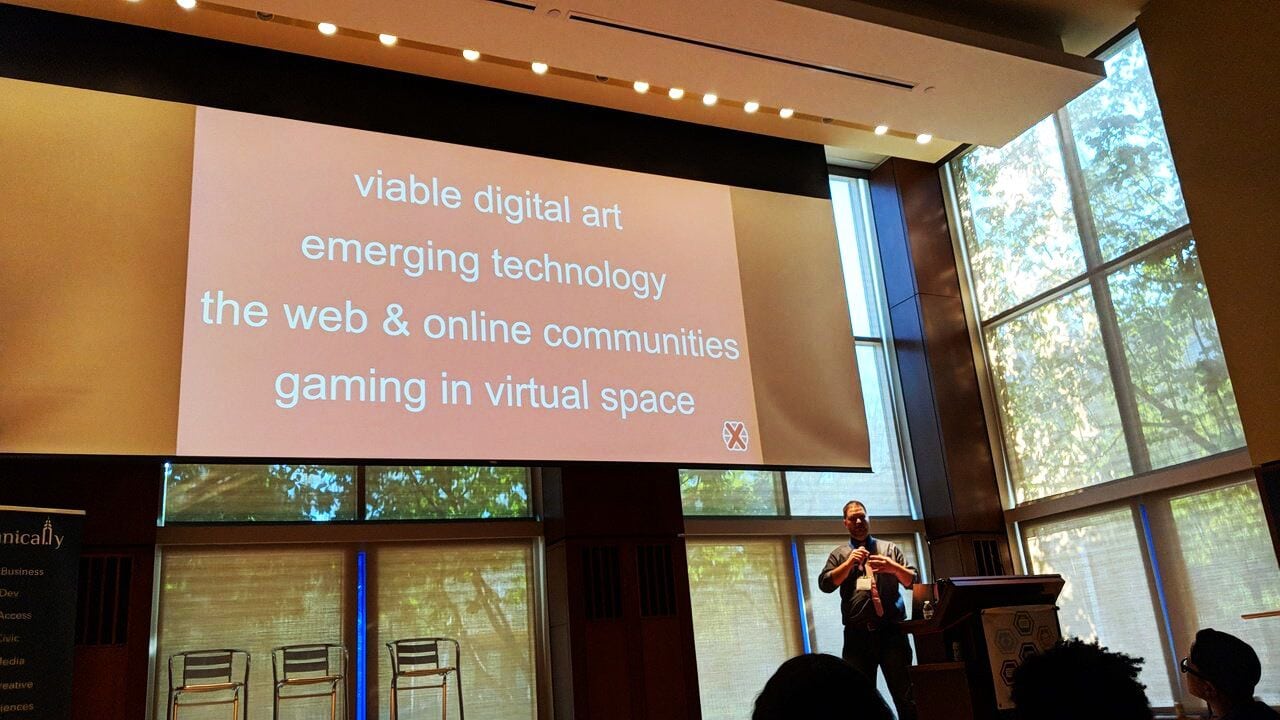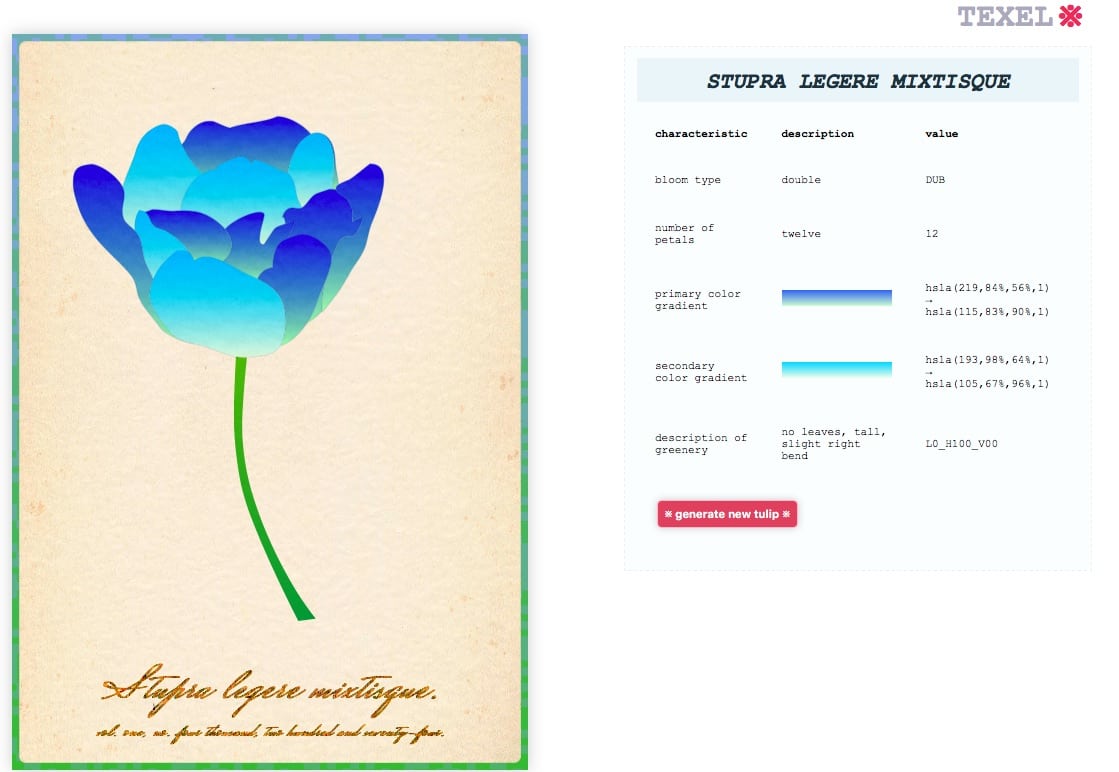Would you invest in art if you couldn’t hang it on your wall? What does it mean to own something that only exists in the digital world?
It’s questions like these that inspired artist and designer Mark Willis, and developers Sam Weinrott and Eric Manganaro, to create Texel, a blockchain-enabled virtual world of digital tulips they define as “part art installation, part gaming experience and part social experiment.”
The three met by chance at the Rare Digital Art Festival in New York City last January. Intrigued by the palpable excitement generated at an auction of digital assets during the event, the trio decided to put their heads together.
As Willis recalls, “People were paying five figures for a digital CryptoKitty. We thought, ‘How can we play in this space?’”
Taking inspiration from digitally unique crypto collections like CryptoKitties (which, fun fact, was first covered by Technical.ly Brooklyn) and CryptoPunks, and community-based social experiment Place on Reddit, the team conceptualized their own project, amping up the elements of art and interactive gameplay.
The idea of owning a digital asset is such a weird concept.
Together they built the virtual island of Texel, a living, breathing digital art ecosystem where users can buy, plant, breed and trade programmatically generated, genetically unique tulips.
Texel (named for an actual island in the Netherlands), is set up like a grid. Users can select where they want to purchase a plot and plant their bulbs. Because each bulb has unique DNA, users won’t know what their tulips will look like until they bloom. When it comes time to pollinate, users can choose to regrow their plants with the same genetics, or breed them to create something completely new — and potentially desirable.
And that’s where it gets interesting.
“The chief wrinkle that we’re adding to the crypto-collection space is the geographic element,” says Weinrott.
Users can manipulate the visual makeup of their tulips by where they chose to plant them within the ecosystem. Plant one all alone and it will remain pure, but choose a plot next to other tulips and the flowers will cross-pollinate and breed a new type of tulip — just like in the real world.
“Say I have a super rare tulip,” says Weinrott. “If I were to plant that, the rest of the community might want to be near it, so the price of the plot skyrockets. There could be a land rush. People can bid to breed with what they want. There’s a competitive aspect.”
The decision to focus their project around tulips is anything but random.
Many have likened the recent Bitcoin boom to Tulip Mania from the early 17th century in the Netherlands (though some historians are now calling that mostly a “myth”). The mania metaphor, combined with the intrinsic beauty and emergent qualities of the flower, made it the perfect choice for the artistic element of their project.

Though people need Ethereum currency to participate in Texel (via a marketplace run on smart contracts), the creators themselves aren’t motivated by money.
For Weinrott, the project is a study in social science. He’s excited to see how users breathe life into the ecosystem, and what happens visually across the grid over time as users decide what types of tulips to breed and how they interact.
For Willis, an artist, it’s about understanding the value of art in the modern age and evolving the definition of digital art and decentralized ownership.
Recognizing that digital asset ownership is still a novel concept for the masses, the team understands there are barriers to investing in the intangible.
“It’s tricky because the idea of owning a digital asset is such a weird concept,” said Willis. “It takes a leap of faith. We’re just at the beginning.”
Texel is slated to launch within the calendar year. Until then, interested parties can sign up for updates and check out demos on the Texel website.








